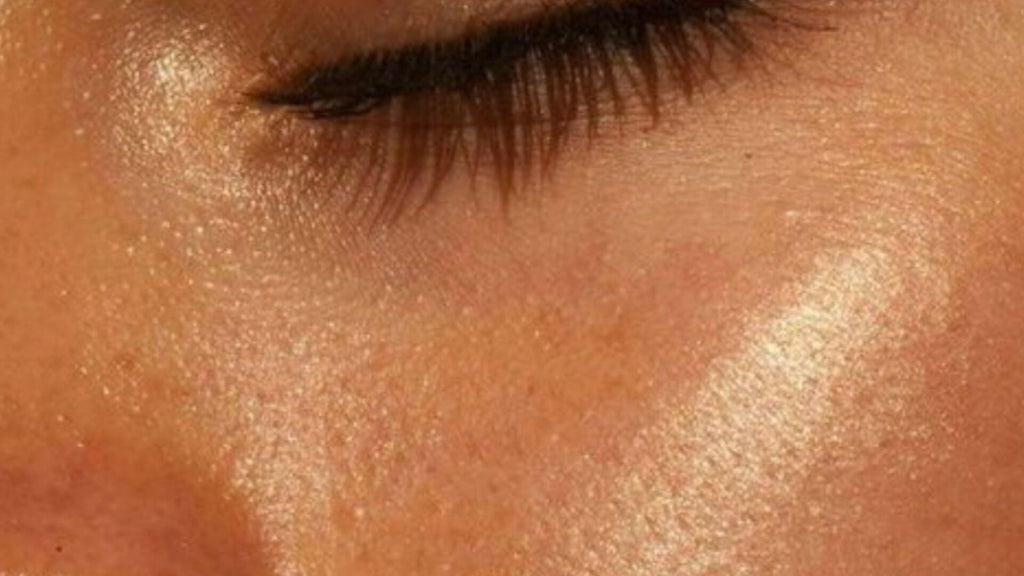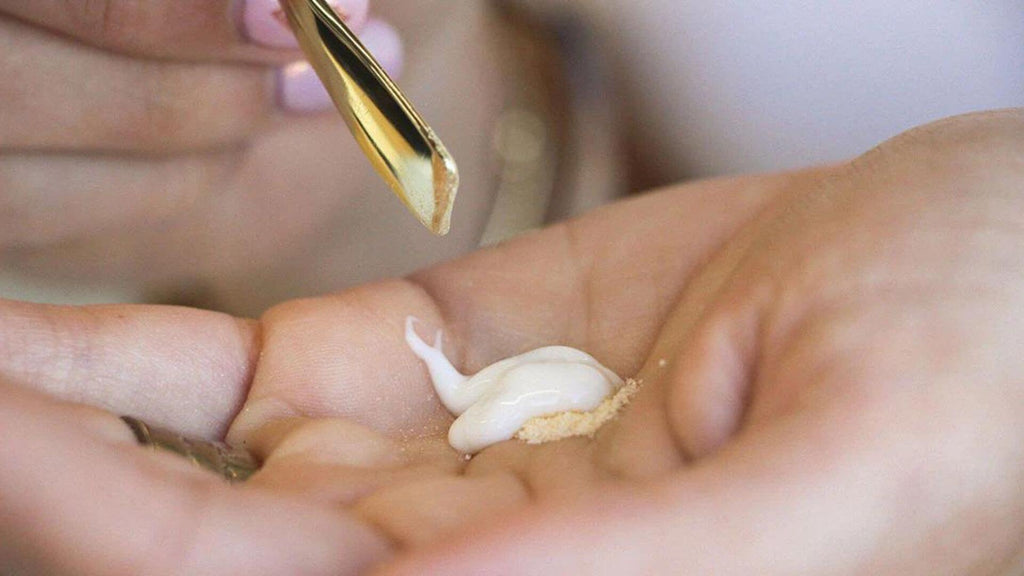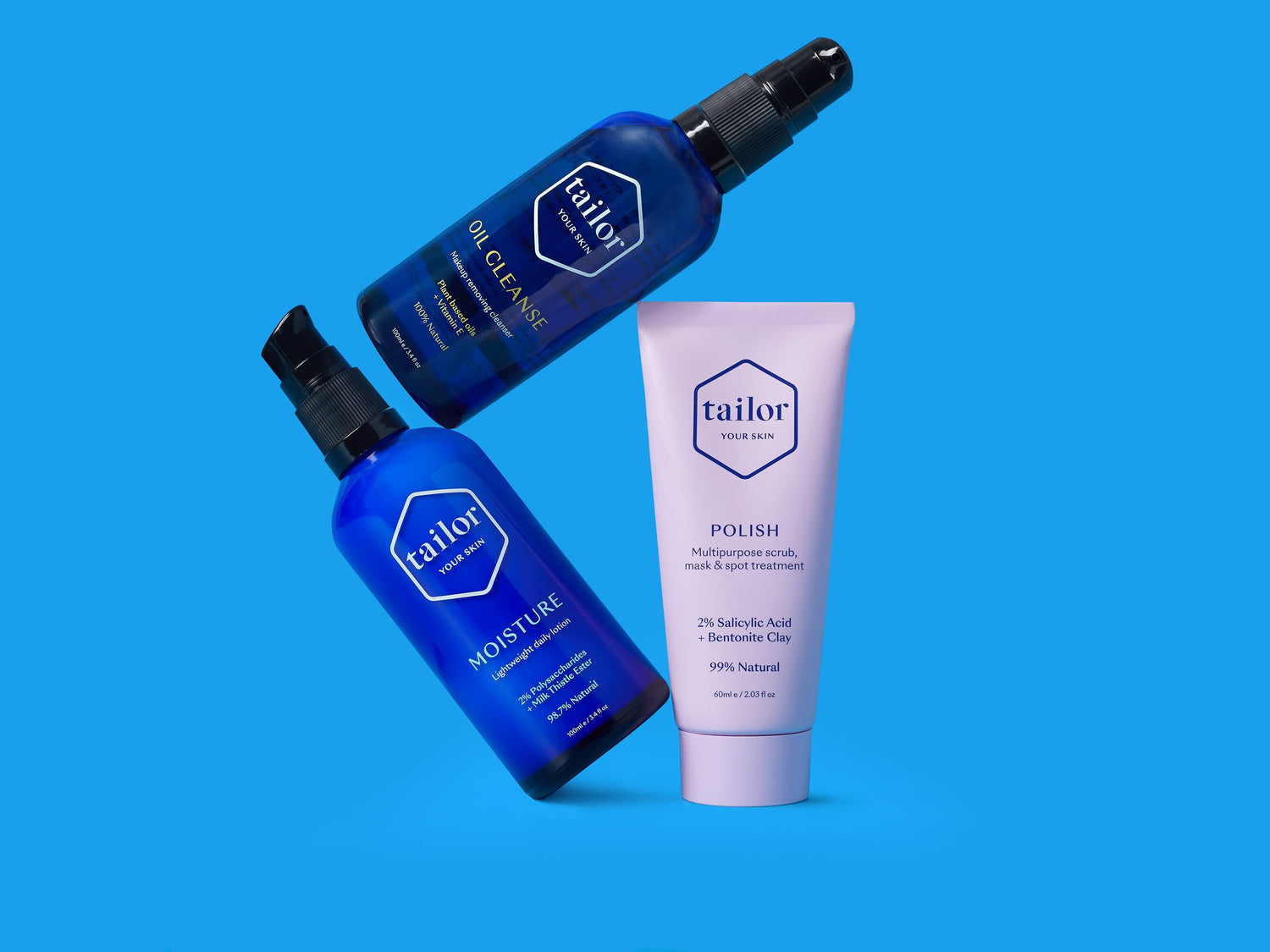We thought it was about time we properly introduced you to our superhero product, Gold Dust. We've answered your top questions to make sure you know exactly how and why it works, plus how to make the most out of its magical powers.
What is vitamin C?
Vitamin C is an antioxidant that helps to protect the skin from UV damage, boost collagen production, fade scarring, brighten the complexion, while also reducing hyperpigmentation, wrinkles, redness and breakouts. When the skin is exposed to UV light, pollution, toxins and other stressors, Vitamin C protects the skin from oxidative stress. Check out other benefits of Vitamin C and how to use it here.
Also known as ascorbic acid, Tailor sources it naturally from non-GMO corn via fermentation. There are other Vitamin C derivatives out there but we're sticking with natural Vitamin C because it's known to be the most bioavailable.
What is COQ10?
CoQ10 is a cellular energiser and antioxidant can reduce the visible oxidative damage caused by UV rays and even decrease the depth of wrinkles. It works synergistically with Vitamin C to leave skin looking younger, clearer and brighter.
It is naturally golden in colour, giving Gold Dust its name.
CoQ10 is formed by deriving glucose from non-GMO corn and fermenting it.

How much do I use?
The recommended 'scoop' of Gold Dust using the provided. It can be found when you open the lid off your jar, and it will be sitting on the caska seal.
When it comes to how much Gold Dust to use, you really need to listen to your skin! Start with a small amount, and increase if you feel you need it. People with sensitive skin should be cautious when increasing the amount of Gold Dust used, as the powerful active ingredients can be too harsh for very sensitive skin.
What should I mix Gold Dust with?
Unlike a vitamin C serum or cream, Gold Dust is a dry powder. In order to activate the vitamin C, it needs to be mixed with a water-based product. Tailor Renew, Moisture or Hydrate can all be used with Gold Dust. You will not get the full effects of Gold Dust by mixing it with an oil or oil-based product, so save the oils for later in your skincare routine.

When in my routine should I use it?
Gold Dust can be added when you're ready to take your routine to the next level. After cleansing (and toning, if you use a toner), mix Gold Dust with your choice of a water-based serum or moisturiser. If you choose to use a serum, after applying Gold Dust follow up with your moisturiser. This is also when you can add an oil or oil-based product and eye cream.
Why should I use vitamin C at night?
During the day your skin is exposed to UV light and this can deplete your vitamin C reserves. So it's important to replenish these levels using topical and dietary vitamin C. Furthermore, your skin does its repairing and rejuvenation overnight, making it the perfect time to have Gold Dust working its magic.
While some argue that morning is best for protecting the skin, others prefer it at nighttime when the skin's vitamin C is most depleted.
Tailor your Gold Dust to your skin concerns.
Why do I need to take a break from vitamin C?
The results from using Gold Dust can be so good you want to use it every night- but we recommend you take a break. Why? Your skin quickly gets used to the vitamin C, almost building up an immunity, causing Gold Dust to be less effective. By taking a break in between, your skin is getting the most benefit.

Is this normal?
Gold Dust makes my face tingle on application, is this normal? Yes, definitely! Gold Dust has powerful active ingredients; the tingling sensation is a product of the vitamin C's activity on the skin.
What's the difference between Gold Dust and a vitamin C serum?
As we mentioned before, natural vitamin C (in the form of ascorbic acid) needs water to activate it. It is only active for a short period of time before it begins to denature and is most effective for the first 48 hours. By mixing Gold Dust when you apply it, you are getting the most benefit out of the vitamin C for your skin.
With serums containing ascorbic acid, the vitamin C is activated when it's manufactured. The product then moves from the warehouse, to the shop shelves, and finally to your bathroom. That's a lot longer than 48 hours by the time you get it on your skin, meaning the vitamin C is likely to have little effect.

